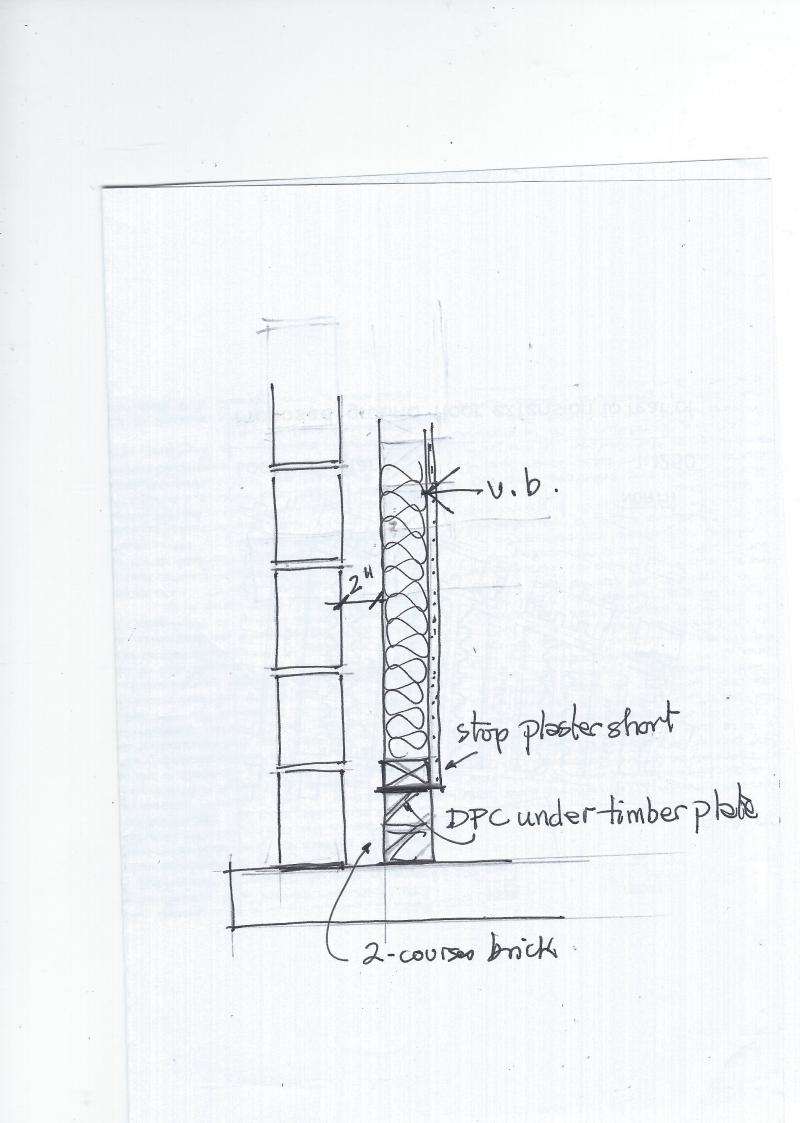What your doing is likened to a perpendicular floor structure but instead of timber board cover, yours is a plasterboard. If the studs are free standing from the block work wall, there should be little chance of condensation and if you create the ventilation between walls, what little could be caused, will be allowed to vented away. However these are my thoughts on the matter, it's up to you to put your thoughts into practice...pinenot
Pinenot; there should be a vapour barrier on the WARM side of the insulation, to stop interstitial condensation. The cavity between the blockwork and studwork is not there to vent off any condensation 'which might get through', but to allow any water penetration from outside to drain off. (If any internally-generated vapour did get through the insulation, it could condense on the outer face of the studs and cause problems). All basic stuff really.


